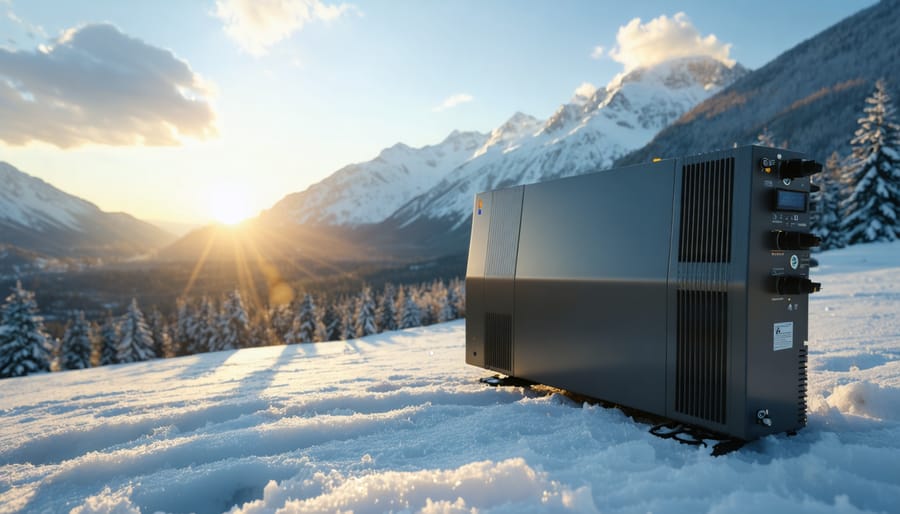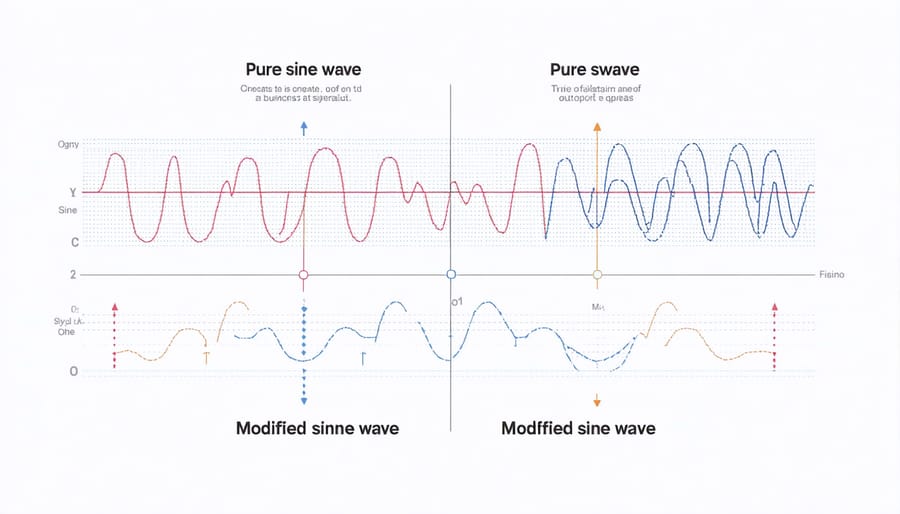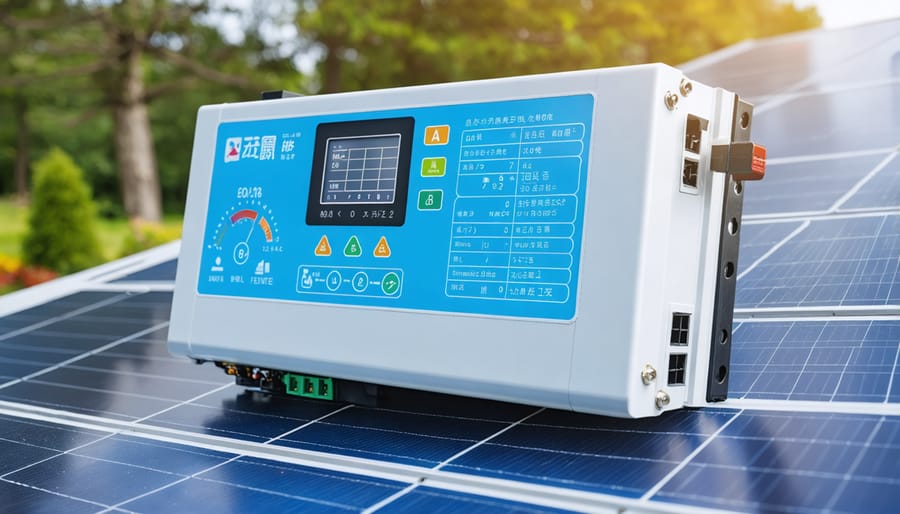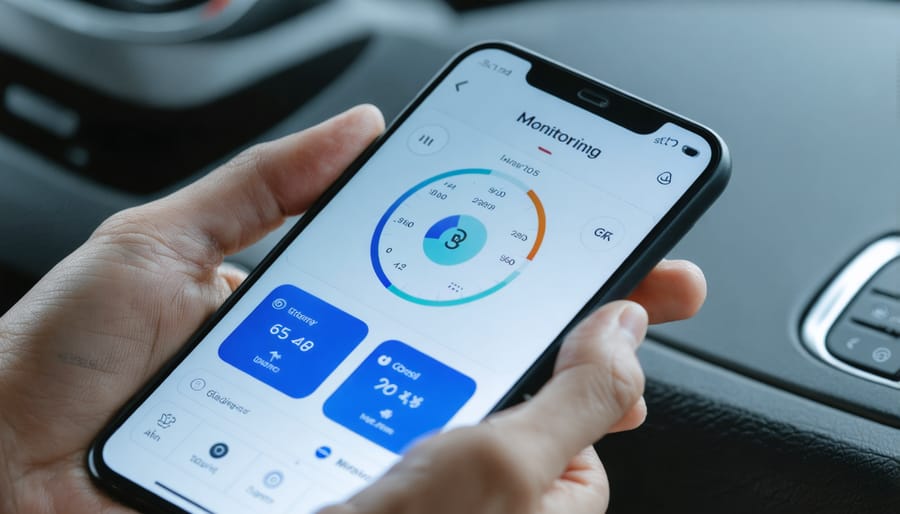The Off-Grid Solar Inverter That Powers Through European Winters

Choosing the right inverter stands as the most critical decision when building off-grid solar systems. As the heart of your solar installation, it transforms DC power from your panels into usable AC electricity while managing your entire system’s performance. Modern off-grid inverters must balance sophisticated power management with rugged reliability, especially in Europe’s diverse climate conditions.
Today’s market offers advanced solutions that integrate smart monitoring, enhanced battery charging algorithms, and robust surge handling capabilities. Whether you’re powering a remote mountain cabin or establishing energy independence for your primary residence, selecting the optimal inverter requires careful consideration of power requirements, battery compatibility, and long-term maintenance needs.
This comprehensive guide examines the top off-grid inverters available in Europe, analyzing crucial factors like conversion efficiency, surge capacity, and smart features that define truly exceptional performance. We’ll focus on practical solutions that deliver reliable power while meeting strict European safety standards and installation requirements.
Understanding Off-Grid Solar Inverters
Pure Sine Wave vs. Modified Sine Wave
When selecting an off-grid solar inverter, understanding the difference between pure sine wave and modified sine wave output is crucial for optimal system performance. Pure sine wave inverters produce a smooth, consistent electrical output that perfectly mimics the grid power supply. This high-quality waveform ensures maximum compatibility with sensitive electronics, medical equipment, and modern appliances.
Modified sine wave inverters, while more affordable, generate a stepped waveform that approximates a sine wave. While suitable for basic applications like lighting and simple tools, they may cause certain devices to operate less efficiently or produce buzzing sounds. Some equipment, particularly those with AC motors or digital timers, might experience reduced performance or even damage over time.
For European households and businesses investing in off-grid solar systems, pure sine wave inverters represent the superior choice despite their higher initial cost. They offer better energy efficiency, quieter operation, and compatibility with a broader range of devices. This investment particularly pays off in regions with strict electrical standards and when powering sophisticated household appliances common in European homes.

Essential Features for European Climates
European climates present unique challenges for off-grid solar inverters, requiring specific features to ensure optimal performance and longevity. Humidity resistance is crucial, particularly in coastal and northern regions where moisture levels can be consistently high. Look for inverters with IP65 or higher protection ratings to guard against water and dust ingress.
Temperature management is another critical factor. While Europe’s climate is generally moderate, inverters must handle both winter lows and summer peaks efficiently. The best inverters for European installations include advanced thermal management systems and can operate effectively in temperatures ranging from -25°C to +60°C.
Grid compatibility features are essential, even for off-grid systems, as many European users opt for hybrid setups. The inverter should comply with European grid codes and VDE standards, particularly important for potential future grid connections. Smart monitoring capabilities that work with European internet infrastructure and mobile networks ensure reliable system oversight.
For regions experiencing frequent weather fluctuations, rapid Maximum Power Point Tracking (MPPT) technology helps maintain optimal power generation despite varying cloud cover, maximizing energy harvest in less-than-ideal conditions.
Top Performance Criteria

Efficiency Ratings
Efficiency ratings play a crucial role in determining the performance and cost-effectiveness of off-grid solar inverters. The most efficient models currently available in the European market achieve conversion rates between 95% and 98%, meaning they convert nearly all the DC power from your solar panels into usable AC power for your home.
For off-grid applications, choosing an inverter with high efficiency becomes even more critical as every percentage point of loss means less available energy from your limited battery storage. Modern pure sine wave inverters typically offer better efficiency than modified sine wave alternatives, particularly when powering sensitive electronic equipment.
Temperature performance is another vital aspect of efficiency ratings. Premium inverters maintain their high conversion rates across a broader temperature range, which is particularly relevant for installations in varied European climates. Look for models that offer peak efficiency at both partial and full loads, as most systems operate at partial capacity for significant portions of the day.
Many leading manufacturers now incorporate advanced Maximum Power Point Tracking (MPPT) technology, which can increase overall system efficiency by up to 30% compared to standard charging methods. Some inverters also feature smart load detection and standby modes, reducing energy consumption when demand is low and maximizing battery life in off-grid setups.
Power Output and Scalability
Selecting the right inverter capacity is crucial for ensuring your off-grid solar system performs optimally. To determine your power output requirements, start by calculating your peak power usage and daily energy consumption. For residential installations, inverters typically range from 3kW to 8kW, while commercial applications might require 10kW or more.
Consider future expansion when sizing your inverter. It’s recommended to choose an inverter with 20-30% more capacity than your current needs to accommodate additional solar panels or increased power demands. Modern off-grid inverters offer modular designs, allowing you to parallel multiple units for enhanced capacity and redundancy.
Pay attention to surge capacity – the inverter’s ability to handle short-term power spikes from equipment start-up. Quality off-grid inverters should manage 2-3 times their rated power for brief periods. For European installations, ensure the inverter complies with local grid codes and safety standards.
The inverter’s efficiency at different load levels is another crucial factor. Top-tier models maintain high efficiency (95%+) even at partial loads, which is essential for optimal energy utilization throughout varying daily consumption patterns. Look for inverters with smart load management features that can prioritize critical appliances during periods of limited solar production.
Smart Features for Modern Living
Remote Monitoring Systems
Modern off-grid inverters increasingly come equipped with sophisticated remote monitoring capabilities, allowing users to track their system’s performance in real-time. Through dedicated mobile apps and web portals, homeowners can monitor power generation, battery status, and energy consumption patterns from anywhere with an internet connection.
These systems excel in their smart home integration, enabling seamless communication with other household devices and energy management systems. Users can receive instant notifications about system performance, potential issues, or maintenance requirements, ensuring optimal operation of their solar installation.
Advanced monitoring features typically include detailed analytics, historical data tracking, and customisable reporting options. This data helps users optimise their energy usage patterns and identify opportunities for improved efficiency. Many systems also offer predictive maintenance alerts and automatic software updates, reducing the need for manual oversight while maximising system reliability.
For European installations, these monitoring systems are particularly valuable during varying seasonal conditions, helping users adapt their energy consumption patterns according to available solar resources.

Safety and Protection Features
Top-tier off-grid solar inverters incorporate multiple layers of protection to ensure safe and reliable operation. Modern units comply with stringent European safety standards, including IEC certifications and CE marking requirements. Essential safety features include surge protection, over/under voltage protection, and advanced ground fault monitoring systems.
These inverters typically feature intelligent thermal management systems that prevent overheating while maintaining optimal performance. Short-circuit protection and reverse polarity safeguards protect both the inverter and connected equipment from potential damage. Many models also include integrated DC disconnects and AC circuit breakers for additional safety during maintenance.
Advanced monitoring capabilities alert users to potential issues before they become critical problems. Most quality inverters feature IP65 or higher ingress protection ratings, ensuring durability in various European weather conditions. Anti-islanding protection is another crucial feature, automatically shutting down the inverter if grid power fails, protecting maintenance workers and preventing equipment damage.
For enhanced peace of mind, leading manufacturers offer comprehensive warranty coverage and conform to the latest European grid codes and safety regulations.
Installation and Maintenance Considerations
Professional Installation Requirements
The success of your off-grid solar system heavily depends on proper system installation by certified professionals. While DIY installations might seem cost-effective, professional installation ensures optimal performance, safety compliance, and system longevity. European regulations require that off-grid inverter installations meet specific safety standards and local building codes.
Certified installers possess the expertise to properly size your system components, implement appropriate surge protection, and ensure correct cable sizing and routing. They understand the intricacies of battery bank connections, grounding requirements, and ventilation needs specific to European installations. Professional installers also ensure compliance with IP ratings for outdoor installations and proper integration with existing electrical systems.
Working with certified professionals provides additional benefits, including warranty protection, documentation for insurance purposes, and access to post-installation support. Many manufacturers actually require professional installation to maintain warranty coverage. This investment in professional installation ultimately protects your larger investment in the off-grid solar system while ensuring maximum efficiency and safety.
Long-term Maintenance Tips
To ensure your off-grid solar inverter maintains optimal performance for years to come, establish a regular maintenance routine. Start by conducting monthly visual inspections of the inverter’s exterior for signs of dust, debris, or physical damage. Clean the cooling fins and ventilation areas carefully using compressed air or a soft brush to prevent overheating.
Monitor your inverter’s display panel regularly for error codes or unusual readings, and maintain detailed records of any performance changes. Check all cable connections quarterly, ensuring they remain tight and free from corrosion. In regions with extreme weather conditions, consider installing additional weather protection while maintaining proper ventilation.
Schedule professional maintenance annually to inspect internal components, test safety features, and update firmware if necessary. Keep the surrounding area clear of vegetation and ensure proper airflow around the unit. For battery-based systems, coordinate inverter maintenance with battery maintenance schedules to optimise system efficiency.
Replace cooling fans and capacitors preventively according to manufacturer recommendations, typically every 5-7 years, rather than waiting for failure. This proactive approach significantly extends your inverter’s lifespan and maintains system reliability.
Choosing the best off-grid solar inverter requires careful consideration of multiple factors, from power requirements and battery compatibility to climate resilience and system scalability. The ideal inverter for your installation will depend on your specific needs, but premium European brands like Victron Energy, SMA, and Fronius consistently deliver exceptional performance and reliability for off-grid applications.
Remember to prioritize features such as high efficiency ratings, robust warranty coverage, and smart monitoring capabilities when making your selection. For European installations, ensure your chosen inverter complies with local grid codes and safety standards, and consider the availability of local technical support and spare parts.
Before making your final decision, we recommend consulting with qualified solar professionals who can assess your specific energy requirements and site conditions. They can help you determine the optimal inverter size and configuration for your off-grid system, ensuring long-term reliability and performance.
As the renewable energy landscape continues to evolve, investing in a quality off-grid inverter from a reputable manufacturer will provide you with the foundation for a dependable and efficient solar power system. Take time to research your options, compare specifications, and consider future expansion possibilities to make an informed decision that serves your energy independence goals for years to come.
Leave a Reply